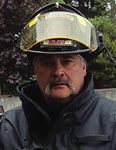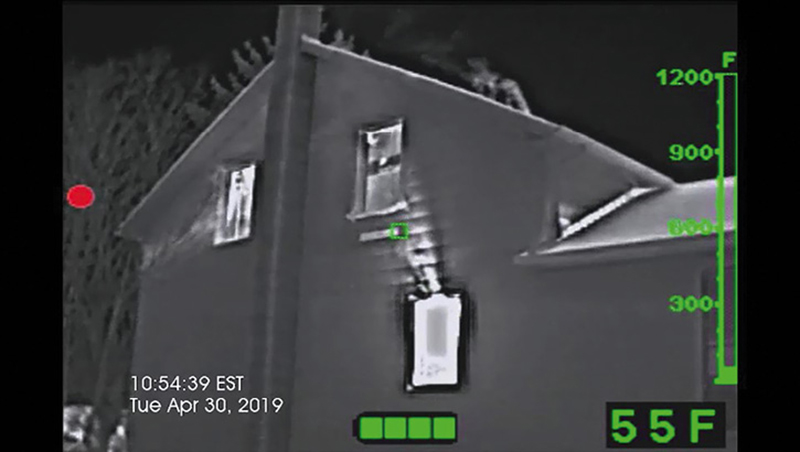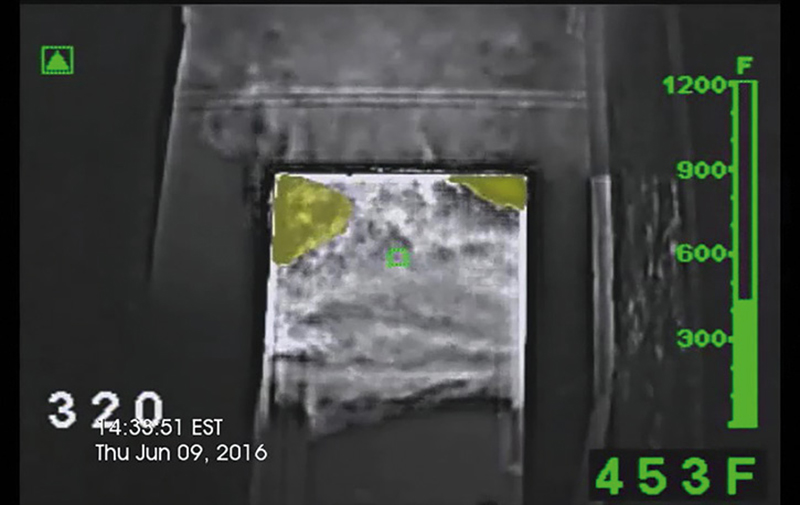Firefighters spend a lot of time training. This training is important to keep their skills honed for when they are called on during emergency situations and can include pump and aerial operations, donning and doffing of turnout gear, hose extending and pulling drills, ceiling breach exercises, forcible entry drills, and victim search techniques with victim drags and carries.

Most departments would consider these important for training, but how much time do fire departments devote to specific training with their thermal imagers (TIs)?
TI training shouldn’t just be observing fire behavior and how it looks on the TI’s display screen. It should also include ensuring that the TI is ready for use, image interpretation is understood by the firefighters, and the TI is deployed in all actual firefighting tasks. Some of the basics can be overlooked or taken for granted in training evolutions, but fire departments that ignore them risk that the TI is used ineffectively during emergency operations.
Deploying the TI
Deploying the TI from an apparatus and attaching it to the personal protective equipment sounds like a very simple task, but when adrenaline is flowing and the action is furious, it can be mismanaged, costing precious time. Firefighters should practice removing the TI from their apparatus or directly from their apparatus charger, if they have one, while wearing the gear they would have on when departing the apparatus. Then, they can practice attaching the TI to their gear or self-contained breathing apparatus (SCBA). When attaching the TI to the gear, firefighters should find a place that keeps the TI within easy reach but does not interfere with performing basic tasks. Because one of the biggest obstacles to effective TI use is getting the tool to where it is needed, this deployment and attachment process should be a component of every department’s training procedure.
Operating the TI with Gloved Hands
Operating a TI with a gloved hand sounds easy but can be challenging during an emergency operation. Firefighters too often do this in nonemergency situations without wearing gloves and fail to realize the increased difficulty of using a TI in emergency operations. All TIs have buttons that need to be manipulated during different stages of emergency operations. Firefighters need to become familiar with where the power button is located and practice finding it with a gloved hand in the dark and while wearing an SCBA face piece. This helps firefighters learn to capably do this in a sight-denied situation when the unit has been inadvertently powered off or a battery needs to be changed. This training should be extended for all buttons on the TI so firefighters have a good familiarity with the buttons, their locations, and their functions.
Replacing the TI’s Battery
Replacing the battery on a TI can be a challenging task depending on the TI, the size of the battery, and where the spare battery is carried. This task is often practiced in a boardroom type setting with no gloves or gear, but firefighters should do this task with gloved hands in the dark while wearing a face piece to simulate completing this task in the dark or smoky conditions.
Live Training Burns
Firefighters often get the opportunity to participate in training burns. In these situations, firefighters usually use a TI to observe fire behavior and bypass the search assistance and other capabilities that a TI can provide. During training burns, firefighters can better understand the real benefits of a TI so they are able to capitalize on them when a real event occurs. Below is a sampling or scenarios that firefighters can practice during training burns.

1 A TI is used to check for exterior heat locations—i.e., roof, windows, walls, and basement areas. (Photos courtesy of Bullard.)

2 A TI is used to show a flow path, growing high heat conditions, and thermal layering.
Size-Up
Firefighters should examine a structure during exterior size-up to locate areas of involvement. If a TI is equipped with special functions and color modes that facilitate a more comprehensive understanding of fire conditions, firefighters should use them at this time.
Fire Attack
Crews should use the TI during all fire operations to find and extinguish the fire, taking note of changes in the TI’s image, such as changing colors that denote high heat and thermal layering. These can help with understanding the level of heat and fire progression.
Search
Search teams can practice with a TI in training burns by placing a victim near a heat source to simulate a difficult rescue in fire conditions (with safety considerations in mind). This will force firefighters using the TI to interpret how the image of a victim looks in high heat situations. It’s important for firefighters to learn to look for human form and body parts that may be partially obscured rather than for specific colors or shades of gray. People usually look light gray on a TI in normal conditions but can show up as darker shades when viewed in comparison with high heat sources. While this may seem at times pointless, practicing this is essential to effective searches during real fire events.

3 A victim is removed during a search exercise.
Overhaul
Depending on the type of training event, firefighters may have the opportunity to conduct overhaul. If this situation exists, they should examine residual heat sources in the structure to check for extension. With the TI, firefighters can watch how pulling down sections of ceiling or removing portions of walls alters heat signatures. Some TIs have special modes that provide helpful color overlays or other capabilities to assist in isolating hot spots.

4 A TI is used during overhaul in a special mode that indicates the warmest areas of concern.
. . .
TI training can produce an endless number of scenarios. Firefighters can practice many of these without access to a training facility. A little creativity in the firehouse can go a long way to ensuring a fully prepared fire department.
Manfred Kihn is a 19-year veteran of the fire service, having served as an ambulance officer, emergency services specialist, firefighter, captain, and fire chief. He has been a member of Bullard’s Emergency Responder team since 2005 and is the company’s fire training specialist for thermal imaging technology. He is certified through the Law Enforcement Thermographers’ Association (LETA) as a thermal imaging instructor and is a recipient of the Ontario Medal for Firefighters Bravery. If you have questions about thermal imaging, you can e-mail him at manfred_kihn@bullard.com.

